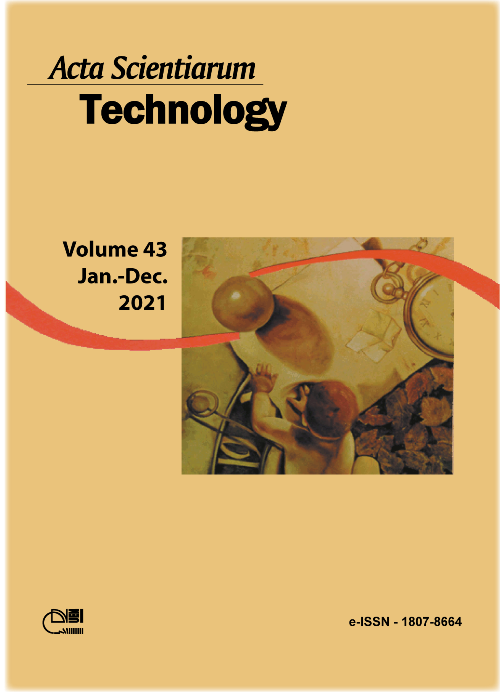Production of tacrolimus using coconut oil as an alternative to glucose
DOI:
https://doi.org/10.4025/actascitechnol.v43i1.55721Palavras-chave:
Tacrolimus; immunosuppressant; vegetable oils; coconut oil; batch fermentationResumo
Tacrolimus is an immunosuppressant used in the treatment of people who have undergone organ and tissue transplants, as well as in the treatment of dermatoses and eye diseases. Strategies have been carried out to increase the productivity of tacrolimus, since many compounds have in their composition tacrolimus precursors, and bacteria Streptomyces depend on a carbon source for their growth. One strategy is to change the carbon source of the fermentation medium. The present study aims to evaluate the use of coconut oil for the production of tacrolimus via Streptomyces tsukubaensis, as an alternative in the face of glucose, a traditional source of carbon. The batch fermentation process was done in an orbital shaker at 28°C and 130 rpm. Quantification of tacrolimus was performed by High Performance Liquid Chromatography (HPLC). The sugars and proteins, present in the medium, were measured from Somogyi-Nelson and Bradford methods, respectively. According to the results, coconut oil achieved the production of tacrolimus higher than glucose. This is due to the presence of a portion of monounsaturated and polyunsaturated fatty acids that act as precursors to tacrolimus. On the other hand, glucose is a quick carbon source for the bacteria and helps in its growth, but in high amounts it inhibits the production of the drug.
Downloads
Downloads
Publicado
Como Citar
Edição
Seção
Licença
DECLARAÇíO DE ORIGINALIDADE E DIREITOS AUTORAIS
Declaro que o presente artigo é original, não tendo sido submetido í publicação em qualquer outro periódico nacional ou internacional, quer seja em parte ou em sua totalidade.
Os direitos autorais pertencem exclusivamente aos autores. Os direitos de licenciamento utilizados pelo periódico é a licença Creative Commons Attribution 4.0 (CC BY 4.0): são permitidos o compartilhamento (cópia e distribuição do material em qualqer meio ou formato) e adaptação (remix, transformação e criação de material a partir do conteúdo assim licenciado para quaisquer fins, inclusive comerciais.
Recomenda-se a leitura desse link para maiores informações sobre o tema: fornecimento de créditos e referências de forma correta, entre outros detalhes cruciais para uso adequado do material licenciado.



















